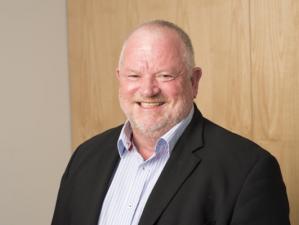Respiratory physician Lutz Beckert considers chronic obstructive pulmonary disease management, including the prevention of COPD, the importance of smoking cessation and pulmonary rehabilitation, and the lifesaving potential of addressing treatable traits. He also discusses the logic of inhaler therapy, moving from single therapy to dual and triple therapy when indicated, as well as other aspects of management
‘Band-Aid’ needed for rural practices while funding scheme reviewed
‘Band-Aid’ needed for rural practices while funding scheme reviewed
We see them with exacerbations of chronic illness in the PRIME acute space in after-hours
Rural health advocates have welcomed an upcoming review of PRIME and after-hours services but say rural general practices need a “Band-Aid” in the meantime.
Practices are struggling right now to fund and deliver services, says the Hauora Taiwhenua rural health network.
General manager advocacy Marie Daly says some rural communities will be at extreme clinical risk without funding support soon for “unsustainable” after-hours and PRIME (Primary Response In Medical Emergencies) services.
Te Whatu Ora says the review is being initiated as part of a wider national review of unscheduled/unplanned, urgent care and after-hours services.
Interim director primary, community and rural Emma Prestidge says the review includes PRIME, ambulance services, telehealth and other “forms of unscheduled care”.
Terms of reference are being finalised, but the review will consider “key areas of service vulnerability and cost pressures” across the “interdependent” services, says Ms Prestidge in an email.
Ms Daly says the sector welcomes Te Whatu Ora agreeing to a more comprehensive review of all urgent and after-hours services, including PRIME.
But she says any significant overhaul of PRIME and after-hours funding, resulting from the review, is unlikely to be felt by practices until 2025.
“In the meantime, we’ve got a sector that is extremely vulnerable and unsustainable, both clinically and financially.”
The PRIME contract and PHO rural funding don’t cover the true cost of delivering PRIME and after-hours services, says Ms Daly. Rather, these rely on practice owners’ goodwill “to subsidise the significant funding gap”.
With the workforce in crisis, all practices struggle to get enough staff to cover after-hours and PRIME rosters, she says. “And some of them are falling over while Te Whatu Ora gets its ducks lined up.”
That places the rural community and New Zealand holidaymakers at “extreme clinical risk”, due to poor access to after-hours care and long waits for the arrival of paramedics from the closest town with a double-crewed ambulance.
One or two situations around the country are vulnerable, says Ms Daly. The National PRIME committee will be meeting shortly to discuss what “interim Band-Aid” is needed to support at risk-practices.
In response to New Zealand Doctor Rata Aotearoa queries about interim funding support while awaiting the review results, Ms Prestidge says a 5 per cent funding increase was made to the PRIME contract from 1 July. The contract does not normally receive annual increases.
Top-up funding was provided for the first time last year, for PRIME medical attendance and clinical triage, and has been extended for 2023/24, says Ms Prestidge.
Ms Daly says the sector welcomed the increase. She believes Te Whatu Ora understands the need for interim measures to plug the gap and support practices while the review is being done.
Rural nurse practitioner and National PRIME committee member Kate Stark says patients finding it difficult to get daytime appointments at practices create more after-hours and PRIME work.
People put off their appointments, “and we see them with exacerbations of chronic illness in the PRIME acute space in after-hours”, says Ms Stark. This includes people with exacerbations of heart failure and people presenting late with infections like cellulitis.
After-hours staff being busier also impacts on practices’ daytime services, says Ms Stark.
“Most people carrying the [after-hours and PRIME] pager are also working the next day so it becomes very difficult to sustain that.”
Te Whatu Ora’s Early Actions programme for primary care released last year included revising the PRIME system with ACC to better support rural urgent care and completing the primary care capitation review.
A briefing paper in December 2022 from Ms Prestidge to then health minister Andrew Little, released to New Zealand Doctor Rata Aotearoa under the Official Information Act 1982, says “a review of the PRIME delivery and funding model will take place in early 2023”. Wider work on funding for rural, after-hours and urgent care was also due to commence in early 2023.
New Zealand Doctor asked Ms Prestidge why the PRIME review did not get under way. She says it became part of the national review of unscheduled/unplanned, urgent care and after-hours services “following feedback from the sector”.
Ms Daly confirms Te Whatu Ora indicated willingness to do a standalone review of PRIME but Hauora Taiwhenua and the National PRIME Committee decided this couldn’t be in isolation from after-hours services, as they were “symbiotic”.
The last review of PRIME was released in 2017 but did not address the sector’s longstanding funding concerns.
We're publishing this article as a FREE READ so it is FREE to read and EASY to share more widely. Please support us and our journalism – subscribe here
One of the benefits of subscribing is you will also be able to share your thoughts about what you read with other in our Comment Stream. You can also take notes on what you read with Capture











![Barbara Fountain, editor of New Zealand Doctor Rata Aotearoa, and Paul Hutchison, GP and senior medical clinician at Tāmaki Health [Image: Simon Maude]](/sites/default/files/styles/thumbnail_cropped_100/public/2025-03/Barbara%20Fountain%2C%20editor%20of%20New%20Zealand%20Doctor%20Rata%20Aotearoa%2C%20and%20Paul%20Hutchison%2C%20GP%20and%20senior%20medical%20clinician%20at%20T%C4%81maki%20Health%20CR%20Simon%20Maude.jpg?itok=-HbQ1EYA)
![Lori Peters, NP and advanced health improvement practitioner at Mahitahi Hauora, and Jasper Nacilla, NP at The Terrace Medical Centre in Wellington [Image: Simon Maude]](/sites/default/files/styles/thumbnail_cropped_100/public/2025-03/2.%20Lori%20Peters%2C%20NP%20and%20advanced%20HIP%20at%20Mahitahi%20Hauora%2C%20and%20Jasper%20Nacilla%2C%20NP%20at%20The%20Terrace%20Medical%20Centre%20in%20Wellington%20CR%20Simon%20Maude.jpg?itok=sUfbsSF1)
![Ministry of Social Development health and disability coordinator Liz Williams, regional health advisors Mary Mojel and Larah Takarangi, and health and disability coordinators Rebecca Staunton and Myint Than Htut [Image: Simon Maude]](/sites/default/files/styles/thumbnail_cropped_100/public/2025-03/3.%20Ministry%20of%20Social%20Development%27s%20Liz%20Williams%2C%20Mary%20Mojel%2C%20Larah%20Takarangi%2C%20Rebecca%20Staunton%20and%20Myint%20Than%20Htut%20CR%20Simon%20Maude.jpg?itok=9ceOujzC)
![Locum GP Helen Fisher, with Te Kuiti Medical Centre NP Bridget Woodney [Image: Simon Maude]](/sites/default/files/styles/thumbnail_cropped_100/public/2025-03/4.%20Locum%20GP%20Helen%20Fisher%2C%20with%20Te%20Kuiti%20Medical%20Centre%20NP%20Bridget%20Woodney%20CR%20Simon%20Maude.jpg?itok=TJeODetm)
![Ruby Faulkner, GPEP2, with David Small, GPEP3 from The Doctors Greenmeadows in Napier [Image: Simon Maude]](/sites/default/files/styles/thumbnail_cropped_100/public/2025-03/5.%20Ruby%20Faulkner%2C%20GPEP2%2C%20with%20David%20Small%2C%20GPEP3%20from%20The%20Doctors%20Greenmeadows%20in%20Napier%20CR%20Simon%20Maude.jpg?itok=B0u4wsIs)
![Rochelle Langton and Libby Thomas, marketing advisors at the Medical Protection Society [Image: Simon Maude]](/sites/default/files/styles/thumbnail_cropped_100/public/2025-03/6.%20Rochelle%20Langton%20and%20Libby%20Thomas%2C%20marketing%20advisors%20at%20the%20Medical%20Protection%20Society%20CR%20Simon%20Maude.jpg?itok=r52_Cf74)
![Specialist GP Lucy Gibberd, medical advisor at MPS, and Zara Bolam, urgent-care specialist at The Nest Health Centre in Inglewood [Image: Simon Maude]](/sites/default/files/styles/thumbnail_cropped_100/public/2025-03/7.%20Specialist%20GP%20Lucy%20Gibberd%2C%20medical%20advisor%20at%20MPS%2C%20and%20Zara%20Bolam%2C%20urgent-care%20specialist%20at%20The%20Nest%20Health%20Centre%20in%20Inglewood%20CR%20Simon%20Maude.jpg?itok=z8eVoBU3)
![Olivia Blackmore and Trudee Sharp, NPs at Gore Health Centre, and Gaylene Hastie, NP at Queenstown Medical Centre [Image: Simon Maude]](/sites/default/files/styles/thumbnail_cropped_100/public/2025-03/8.%20Olivia%20Blackmore%20and%20Trudee%20Sharp%2C%20NPs%20at%20Gore%20Health%20Centre%2C%20and%20Gaylene%20Hastie%2C%20NP%20at%20Queenstown%20Medical%20Centre%20CR%20Simon%20Maude.jpg?itok=Z6u9d0XH)
![Mary Toloa, specialist GP at Porirua and Union Community Health Service in Wellington, Mara Coler, clinical pharmacist at Tū Ora Compass Health, and Bhavna Mistry, specialist GP at Porirua and Union Community Health Service [Image: Simon Maude]](/sites/default/files/styles/thumbnail_cropped_100/public/2025-03/9.%20Mary%20Toloa%2C%20Porirua%20and%20Union%20Community%20Health%20Service%20in%20Wellington%2C%20Mara%20Coler%2C%20T%C5%AB%20Ora%20Compass%20Health%2C%20and%20Bhavna%20Mistry%2C%20PUCHS%20CR%20Simon%20Maude.jpg?itok=kpChr0cc)